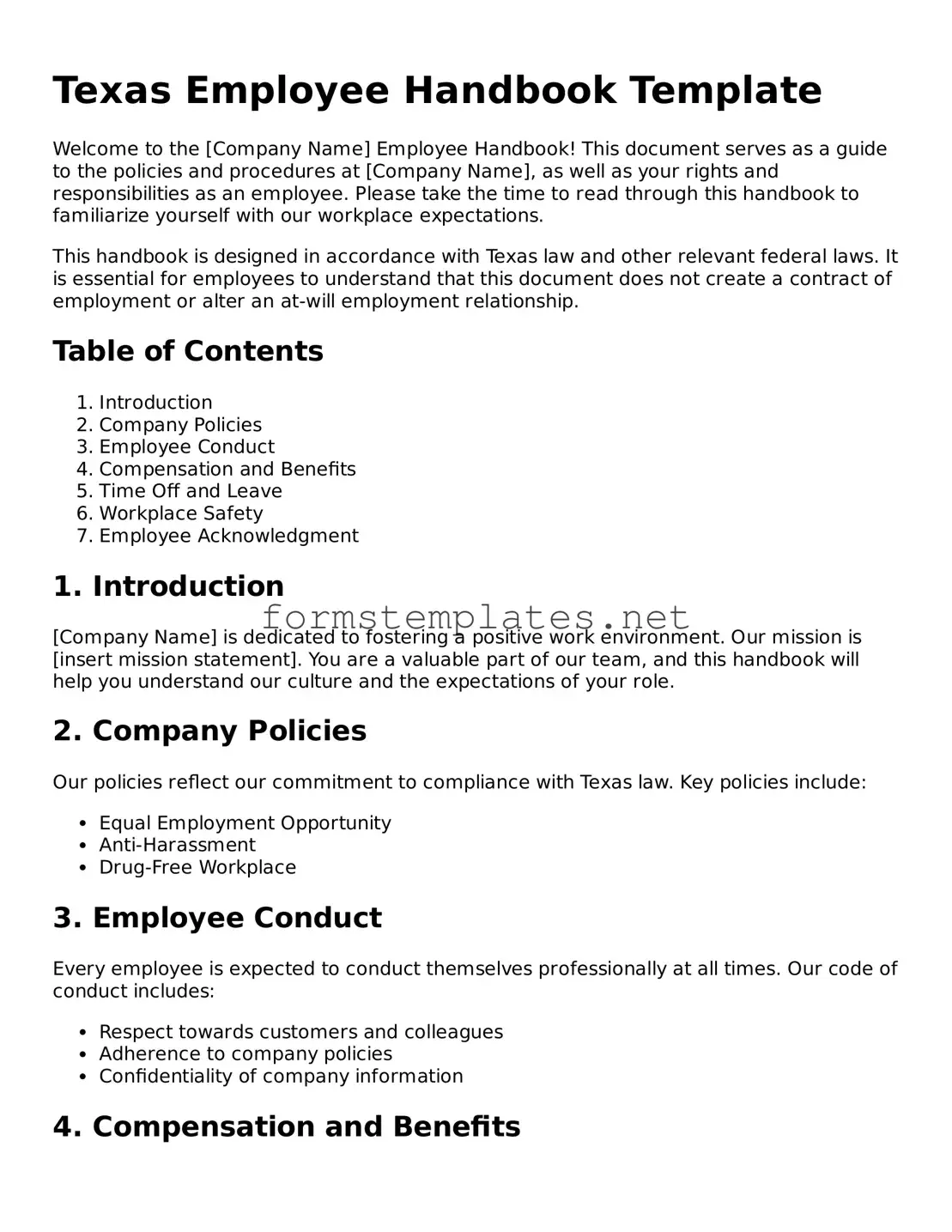Texas Employee Handbook Template
Welcome to the [Company Name] Employee Handbook! This document serves as a guide to the policies and procedures at [Company Name], as well as your rights and responsibilities as an employee. Please take the time to read through this handbook to familiarize yourself with our workplace expectations.
This handbook is designed in accordance with Texas law and other relevant federal laws. It is essential for employees to understand that this document does not create a contract of employment or alter an at-will employment relationship.
Table of Contents
- Introduction
- Company Policies
- Employee Conduct
- Compensation and Benefits
- Time Off and Leave
- Workplace Safety
- Employee Acknowledgment
1. Introduction
[Company Name] is dedicated to fostering a positive work environment. Our mission is [insert mission statement]. You are a valuable part of our team, and this handbook will help you understand our culture and the expectations of your role.
2. Company Policies
Our policies reflect our commitment to compliance with Texas law. Key policies include:
- Equal Employment Opportunity
- Anti-Harassment
- Drug-Free Workplace
3. Employee Conduct
Every employee is expected to conduct themselves professionally at all times. Our code of conduct includes:
- Respect towards customers and colleagues
- Adherence to company policies
- Confidentiality of company information
4. Compensation and Benefits
Employees at [Company Name] receive competitive wages and benefits. For more details, refer to:
- Salary structure
- Health insurance options
- Retirement plan information
5. Time Off and Leave
The company recognizes the importance of work-life balance. Employees are entitled to:
- Vacation days
- Sick leave
- Family and Medical Leave as per applicable laws
6. Workplace Safety
Safety and health are priorities at [Company Name]. All employees must abide by safety guidelines and report any unsafe conditions to management promptly.
7. Employee Acknowledgment
By signing below, you acknowledge that you have received and read the [Company Name] Employee Handbook and understand the policies outlined within.
______________________________ Employee Signature
Date: ______________________
